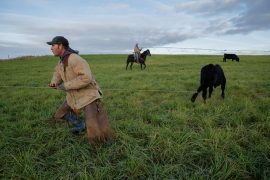written by Sophia McDonald | photos by Rob Kerr
Buffalo once wandered the wide open lands around Burns, munching grass and providing a food source for native people. Overhunting decimated the population. By the late 1800s, there were no buffalo in Oregon and fewer than 700 left in the United States.
North America’s largest land mammals, however, are making a comeback thanks to ranchers captivated by the beast’s natural curiosity, wildness and, of course, tasty meat.
One such rancher is Alan Rousseau with Pine Mountain Ranch in Bend.
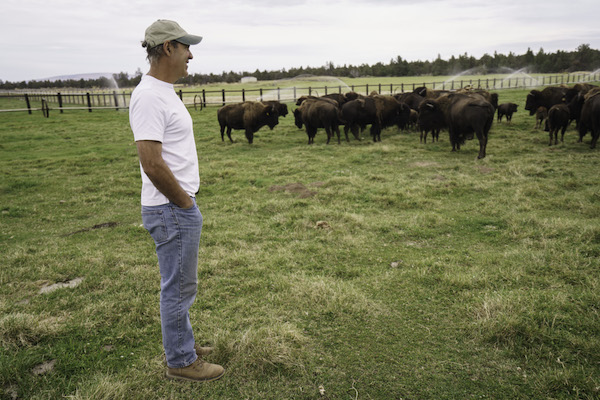
“Years ago, I sat down and wrote a list of goals, and one was to raise buffalo,” he said. Inspired in part by the movie Dances with Wolves, he attended a meeting of the National Bison Association and learned everything he could about the animals. Before the meeting was over, a friend talked him into buying two of them.
“I started raising buffalo as a hobby, but I realized this is a really expensive hobby,” he said. “So I started boarding horses, and I started selling buffalo meat.”
At its peak, Pine Mountain Ranch had 175 buffalo. Rousseau sold the meat at farmers’ markets in Bend and Portland, where he developed a loyal following of people who were attracted to its great flavor and health benefits. Grass-fed buffalo is low in fat and cholesterol and high in protein, omega-3s and vitamin E.
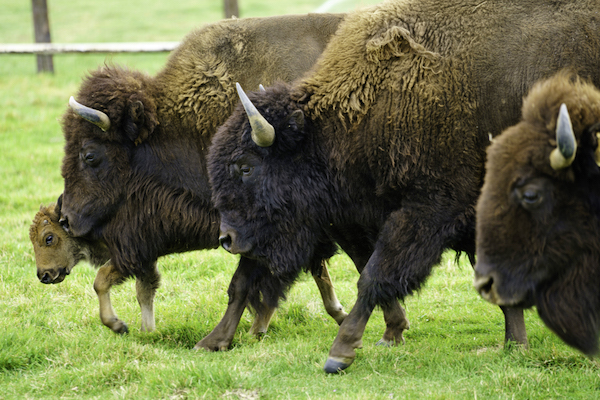
Today Rousseau has downsized to a herd of sixty-five buffalo. “Sales are down 25 to 50 percent at some of the markets,” he reported. His theory is that the explosion of farmers’ markets has redirected customers to their neighborhood markets and away from the markets where he sells. Another aspect, he thinks, could be the growing availability of grass-fed meats at supermarkets.
“I find that it’s important for any farmer to constantly adapt to the situation around them or what the consumer demand is,” he said. Right now the so-called paleo diet is trending, so he’s developed a paleo ground buffalo and paleo sausage that incorporate organ meat. Buffalo bones are selling, too, thanks to the popularity of bone broth.
“I believe we’re six to twelve months away from a big upswing in sales,” said Rousseau. Beef prices are surging, which is increasing interest in alternatives such as buffalo. This, in turn, results in a shortage in supply, which he hopes to fill.
“The question will be, will the demand meet the price?” he said. “Everything we do is up to the customer. Every time they spend a dollar that’s a vote, and the consumer right now is voting for inexpensive meat.”
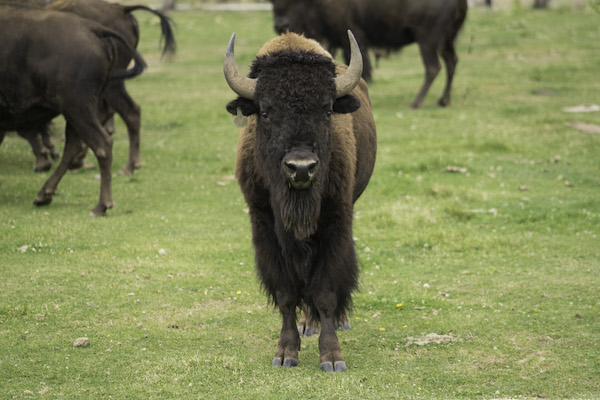
The high cost of grass-fed buffalo is driven by a number of factors. The animals eat grass exclusively, so they don’t put on weight as quickly as they would if they were raised on a feedlot. Buffalo are typically harvested at thirty to thirty-two months, when they weigh 900 to 1,000 pounds. A buffalo can run through or jump over a six-foot fence, so preparing and maintaining the property requires a larger investment.
Though they may be expensive to raise, buffalo have brought some less obvious rewards. Besides giving Rousseau a viable business, these not-quite-wild, not-quite-domesticated animals have done great things for his ranch. “They reseeded all my dead fields,” he said. With their small hooves, they chop and aerate the soil, making the land easier to water. In turn they remove broadleaf weeds and bring back native grasses.
“In the United States there are about 2,000 ranchers raising bison,” said Dave Carter, executive director of the National Bison Association. Ranchers are concentrated in the states where buffalo were naturally prevalent, including the Dakotas, Colorado and Montana. Nonetheless, people are raising buffalo in every state. Forty-one Oregonians kept 1,400 bison in 2012, according to the most recent data from the U.S. Department of Agriculture.
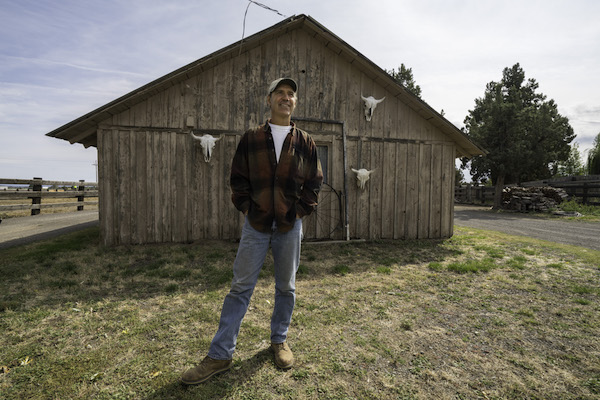
Good grass-fed buffalo is still hard to find in restaurants, but a few chefs are making creative dishes with bison meat. Chef Tony Meyers from Portland’s Serratto Restaurant and Bar said osso buco is a staple at the restaurant. The Italian dish is traditionally made by braising veal shanks in white wine, tomatoes, olive oil and other fresh ingredients.
Tim Eckerd, executive sous chef at the Heathman Restaurant & Bar, pairs buffalo cheeks with pappardelle, foraged mushrooms and kale. “I like to incorporate fat to make up for the lack of marbling in buffalo,” he said. “I add bacon or prosciutto into my braises. When pan-roasting, I always finish basting with butter or duck fat.”
Rousseau enjoys substituting buffalo for other meats in chili, tacos and burgers. His favorite cut for a bison steak is the tenderloin, paired with a blackberry port sauce from the National Bison Association.


